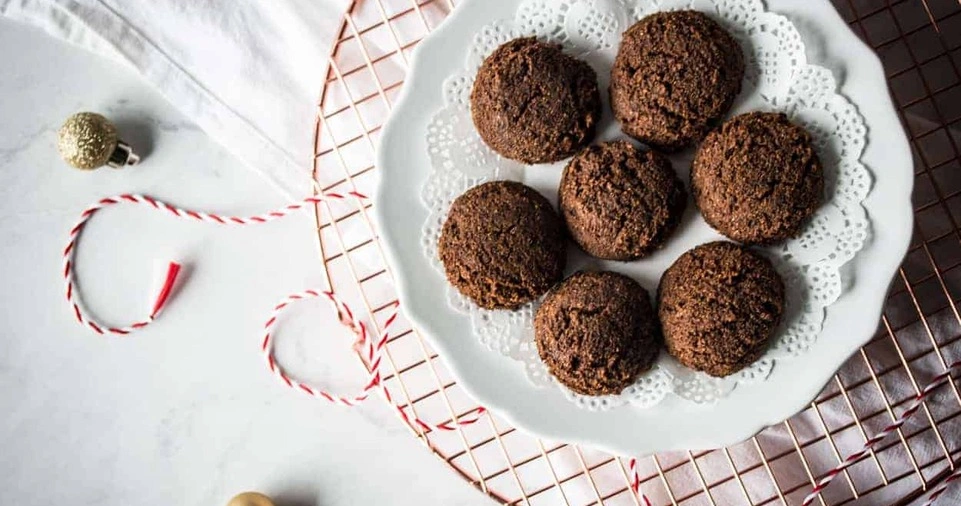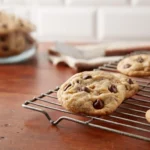Gluten-free baking has gained immense popularity in recent years, whether due to medical reasons like celiac disease or dietary preferences.
However, one of the biggest challenges for gluten-free bakers is ensuring that their cookies taste just as delicious as traditional ones.
Many gluten-free cookies can end up dry, crumbly, or lacking the rich texture that wheat flour provides.
Fortunately, with the right ingredients, techniques, and baking strategies, you can create gluten-free cookies that are just as soft, chewy, and flavorful as their gluten-containing counterparts.
Achieving the perfect gluten-free cookie requires an understanding of how different ingredients interact, as well as how to compensate for the absence of gluten.
Bakers must experiment with various flour blends, binding agents, and moisture-retaining elements to create cookies that rival their wheat-based counterparts.
Additionally, proper baking techniques and the incorporation of flavor-enhancing ingredients can significantly impact the final product.
This guide will walk you through the essentials of gluten-free cookie baking, from choosing the right flour blend to enhancing moisture, flavor, and texture.
Whether you’re new to gluten-free baking or looking to perfect your recipes, these tips will help you create mouthwatering cookies that everyone will love.
Choosing the Right Gluten-Free Flour Blend
Why a Proper Flour Blend Matters
Unlike wheat flour, which contains gluten to provide elasticity and structure, gluten-free flour lacks the binding properties needed for chewy, well-structured cookies.
A single gluten-free flour often doesn’t work well on its own, which is why using a blend of different flours and starches is essential for achieving the perfect texture and consistency.
The combination of flours ensures that the cookies have a balanced taste and texture, preventing them from being too gritty or overly dense.
Store-Bought vs. Homemade Flour Blends
Store-Bought Gluten-Free Flour Blends:
Brands like Bob’s Red Mill 1:1, King Arthur Measure for Measure, and Cup4Cup provide convenience and are designed to mimic the structure of wheat flour.
These blends are pre-mixed with the necessary binding agents, making them ideal for those who prefer a hassle-free option.
Homemade Flour Blend:
If you prefer a DIY approach, try mixing different flours for better texture.
A great blend includes:
- 1 cup rice flour (light texture)
- ½ cup almond flour (adds richness and softness)
- ¼ cup tapioca starch (improves chewiness)
- 1 teaspoon xanthan gum (binds the ingredients together)
Optional: Sorghum flour or oat flour for added depth of flavor
Experimenting with different ratios of these flours allows bakers to customize their blend based on the desired texture and taste.
Some may prefer a mix that enhances chewiness, while others might aim for a crisper cookie.
Using the Right Binding Agents

Why Binding Agents Are Important
Gluten acts as a natural binder in traditional baking, holding everything together and giving cookies their chewy texture.
Without it, gluten-free cookies can become dry or crumbly.
To avoid this, you’ll need effective binding agents that mimic gluten’s properties and ensure that the cookie dough holds together properly.
Best Gluten-Free Binders
Xanthan Gum or Guar Gum:
These are widely used in gluten-free baking and help mimic the elasticity of gluten.
Use about ½ teaspoon per cup of gluten-free flour. Too much can lead to a gummy texture, so precise measurement is key.
Flaxseed or Chia Seed Gel:
Mix 1 tablespoon of ground flaxseeds or chia seeds with 2.5 tablespoons of water and let it sit for 5–10 minutes until it forms a gel.
This works as an excellent egg replacer and adds fiber to the cookies.
Eggs:
If you’re not making vegan cookies, eggs are a natural binder that enhances the structure and texture. Egg yolks also contribute to a richer, more flavorful cookie.
Psyllium Husk Powder:
Another excellent binder, psyllium husk adds structure and prevents crumbling. Use about 1 teaspoon per cup of gluten-free flour.
ALSO READ: How to Organize Your Kitchen for Maximum Efficiency
Keeping Cookies Moist and Soft
Why Gluten-Free Cookies Tend to Be Dry
One common issue with gluten-free cookies is dryness.
Without gluten, there’s less moisture retention, which can lead to a hard or crumbly texture.
Fortunately, there are several ways to keep cookies soft and chewy.
Tips for Adding Moisture
Use More Fat:
Butter, coconut oil, or nut butters add moisture and improve the cookie’s richness.
The type of fat used can also influence the flavor, with coconut oil imparting a mild coconut taste.
Incorporate Natural Sweeteners:
Brown sugar, honey, or maple syrup retain moisture better than granulated white sugar. Brown sugar, in particular, adds depth of flavor and a chewier texture.
Add Fruits or Purees:
Mashed bananas, applesauce, or yogurt can help add extra moisture without affecting the flavor too much.
These ingredients also contribute natural sweetness, reducing the need for excessive sugar.
Enhancing Flavor in Gluten-Free Cookies

Why Gluten-Free Cookies Can Taste Bland
Gluten-free flours often lack the natural depth of flavor that wheat flour provides.
To compensate, it’s important to add ingredients that enhance the overall taste of your cookies.
Ways to Boost Flavor
- Vanilla Extract: A high-quality vanilla extract enhances sweetness and aroma, making cookies more appealing.
- Almond or Coconut Extract: These provide additional depth and a unique flavor, particularly in sugar cookies or shortbread.
- Cinnamon, Nutmeg, or Cocoa Powder: These spices add warmth and complexity to your cookies, making them more flavorful.
- Sea Salt: A pinch of sea salt balances sweetness and brings out the flavors of other ingredients. Using flaky sea salt as a topping adds a gourmet touch.
Chilling the Dough for Better Results
Why Chilling Dough is Essential
Gluten-free dough is often softer and stickier than traditional dough, making it more difficult to shape and bake evenly.
Chilling the dough for at least 30 minutes helps:
- Prevent excessive spreading in the oven.
- Improve the overall texture and structure.
- Allow the flavors to meld together for a richer taste.
For even better results, consider chilling the dough overnight. This allows the ingredients to hydrate fully, resulting in more uniform cookies with better texture.
Baking Gluten-Free Cookies at the Right Temperature
Adjusting Baking Time and Temperature
Since gluten-free flour behaves differently from wheat flour, adjusting baking temperature and time is crucial.
Here’s what to keep in mind:
- Bake at a Lower Temperature: 325–350°F (163–177°C) works best for even baking.
- Check 2–3 Minutes Early: Gluten-free cookies can bake faster than traditional ones, so watch closely to avoid overbaking.
- Let Them Cool on the Baking Sheet: Allow cookies to rest for at least 5–10 minutes before transferring them to a wire rack. This prevents them from falling apart and enhances their chewiness.
Fun and Delicious Add-Ins
Enhancing Texture and Taste
Gluten-free cookies can be even better than traditional cookies when you get creative with mix-ins.
Here are some delicious ideas:
- Chocolate Chips or Chunks: A classic that works with any cookie.
- Nuts (Almonds, Walnuts, Pecans): Adds crunch and depth of flavor.
- Dried Fruits (Cranberries, Raisins, Cherries): Provides natural sweetness and chewiness.
- Coconut Flakes: Adds a slight chew and tropical flavor.
ALSO READ: How to Create the Perfect Cookie Recipe from Scratch
Conclusion
Baking gluten-free cookies doesn’t mean sacrificing taste or texture.
With the right techniques, you can create cookies that are just as delicious as their traditional counterparts.
By selecting the best flour blends, using proper binding agents, adding moisture, and enhancing flavors, you’ll master the art of gluten-free baking.
Happy baking!







